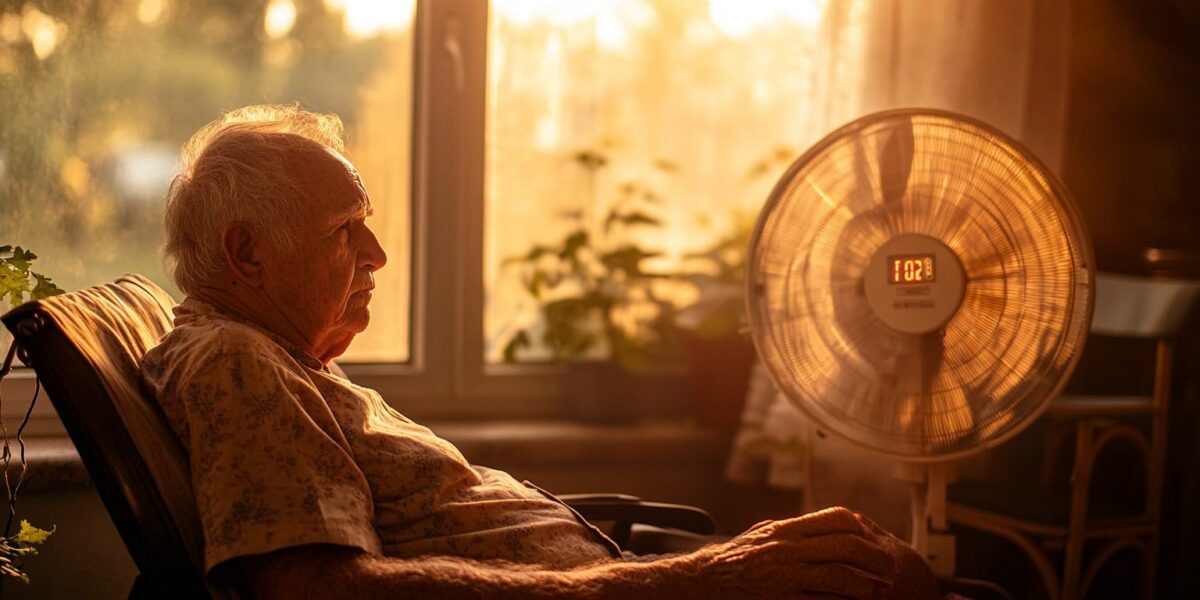The Unspoken Peril of Rising Heat
As temperatures soar, we often overlook the unique challenges faced by older adults. Recent records show that 2023 marked the hottest year globally, with experts predicting even higher temperatures in 2024. This alarming trend poses heightened risks for older individuals, whose bodies are less capable of handling extreme heat.
In the United States, the summer months have become increasingly dangerous, especially for our elderly population. Older adults are disproportionately affected by heat-related illnesses, exacerbated by pre-existing conditions and medications. It’s crucial to recognize that these rising temperatures could lead to significant health crises for this vulnerable group.
NASA’s recent recordings highlight a concerning pattern. On July 22, the world witnessed its hottest day on record, capping off more than a year of unprecedented heatwaves. As we brace for hotter summers, it’s essential to address how these changes impact older adults, who are often more susceptible to the adverse effects of heat.
When we prioritize the needs of older adults in our climate resilience efforts, we inadvertently create safer environments for everyone. By focusing on reducing the impacts of extreme heat on our senior population, we pave the way for more comprehensive and effective climate strategies that benefit the entire community.
Unseen Disasters: The Impact on Older Adults
Climate change has brought about an array of disasters that hit older adults the hardest. During Hurricane Beryl in Texas, 75% of the fatalities were among older individuals. Power outages rendered many unable to cool their homes or power essential medical equipment, leading to tragic outcomes.
In California, atmospheric rivers caused severe flooding in Ventura County, particularly affecting low-income and older residents. These events often go unnoticed, failing to trigger traditional FEMA relief, leaving many elderly individuals without the resources to rebuild or recover.
Wildfires in Lahain’a have also showcased the vulnerabilities of our aging population. Older adults represented 73% of the fatalities, largely due to mobility challenges and economic constraints. The lack of adequate savings and the reliance on fixed incomes further exacerbate their susceptibility to such climate-induced disasters.
- Power outages during hurricanes hinder essential cooling and medical equipment.
- Floods in low-income areas leave older adults without necessary relief and support.
- Wildfires disproportionately impact seniors due to mobility and economic challenges.
The Economic Burden of a Hotter Planet
Beyond health risks, a hotter planet imposes significant financial strains on older adults. Increased demand for cooling leads to higher utility bills, which many on fixed incomes struggle to afford. Low-income households already spend 8% of their income on utilities, a burden that’s unsustainable for many seniors.
Climate change also brings about more frequent and severe weather events, driving up insurance premiums. The rising costs of utilities, insurance, and housing create an untenable situation for older adults, many of whom already face substantial financial challenges.
Despite the stark realities, the needs of older adults are often overlooked in climate resilience planning. This is a critical oversight, given that the senior population is rapidly growing. By 2030, older adults will outnumber children in the US, highlighting the urgent need for inclusive planning.
Some communities aim to be more “age-friendly,” but many fail to consider the specific climate-related issues that affect older adults. Addressing these challenges requires a concerted effort to integrate the needs of seniors into broader climate resilience strategies, ensuring they can safely age in place.
Building Resilient Communities for All Ages
It’s imperative to learn from past experiences and adapt our climate resilience planning to better serve older adults. By focusing on their needs, we can develop solutions that benefit everyone. For instance, incentives for energy-efficient homes can help reduce utility costs, providing much-needed relief for seniors.
Understanding the demographics of our communities is the first step. The vast majority of older adults live independently, not in nursing homes. By engaging with these individuals and their advocates, we can better identify and address their specific needs in times of climate crisis.
Organizations like AARP and FEMA offer valuable resources for disaster resilience planning. Leveraging these tools can help communities initiate meaningful conversations about climate risks and mitigation strategies, ensuring that older adults are not left behind.
As we face a future with increasing temperatures and an aging population, it’s crucial to address the intersection of these two trends. By prioritizing the needs of older adults in climate planning, we can create safer, more resilient communities for everyone.



Carter
Great read, but can we have more practical tips on what individuals can do to help?
caroline
Not surprised at all. We need to start taking real action NOW!
ThomasShadow7
Thank you for this post! I’m going to share it with my local senior center.
Zachary
Can local communities do anything specific to help mitigate these risks for older adults?
scarlett
Why isn’t this being talked about more in the media? Our seniors are at risk!
Jayden
Just another reason why we need to take climate change seriously 😢
katherine
This is alarming. What steps is the government taking to address these issues?
Jackson_Empyreal
Thank you for shedding light on this critical issue. Our seniors deserve better protection!
olivernexus
Wow, this is really scary. How can we help our elderly neighbors stay safe during heatwaves?